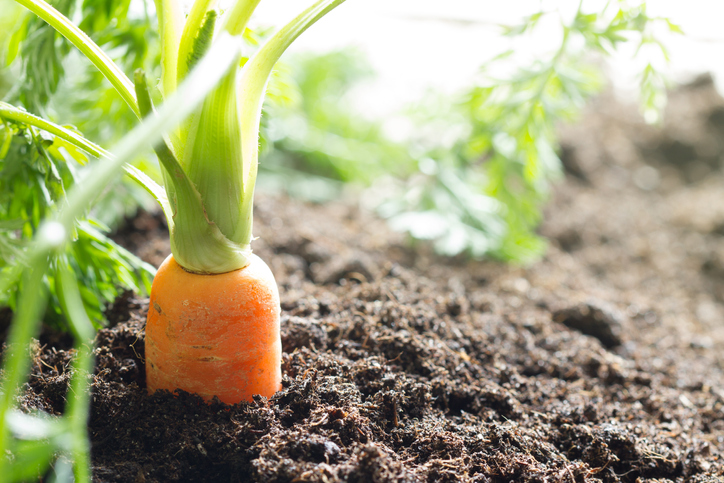US carbon credits startup Boomitra has raised $4 million funding in a round led by Norwegian fertilizer major Yara International.
Joining Yara Growth Ventures was US petroleum giant Chevron, which participated in the round through its VC arm Chevron Technology Ventures, along with several individual investors including Yahoo co-founder Jerry Yang, former US Presidential candidate Tom Steyer, and Radicle Impact co-founder and ag impact investor Kat Taylor.
Boomitra founder and CEO Aadith Moorthy told AFN that the funds will mainly be used for investment in tech and talent.
“There is a significant, growing backlog of projects waiting for analysis [and] in order to actually process and certify credits on the scale of millions of acres and many thousands of farmers, we need a much larger software platform and support team built out,” he said.
The San Jose, California-based startup is one of a growing number of players entering the nascent but rapidly developing low-carbon economy.
It’s aiming to remove atmospheric carbon “on a global scale” by tapping into agricultural-use soils and offering farmers an easy, cost-effective route to measuring soil carbon and participating in carbon credits markets.
To do this, Boomitra is taking a non-traditional tack – forgoing time-consuming, labor-intensive, and relatively expensive soil sample-testing in favor of ‘best estimates’ based on multiple remote data sources.
Soil carbon sequestration could offset as much of 20% of humanity’s annual carbon footprint, according to the UN – and when it comes to actually pushing ag carbon markets forward, pinpoint accuracy in measuring soil carbon is less important than getting as many farmers as possible involved, Moorthy argues.
“Providing a directly [accurate] absolute soil carbon measurement is usually not very useful for interpreting the accuracy of the carbon credits themselves, so we usually provide uncertainty [ranges] on the carbon credits,” he said. “Furthermore, accuracy varies by geographical region based on availability of ‘ground truth’ data, local terrain variability, and other factors.”
Pivoting from precision ag
Using orbiting satellites rather than airplanes, drones, or in-field sensors to carry out imaging helps Boomitra keep equipment costs down.
“We use many satellites, both public and private, along with our AI algorithms to measure absolute levels of soil moisture, soil organic carbon, and more. For training the AIs, we have used millions of real lab soil tests — ‘ground truth’ — that have been sourced from our various partners in each geographical region,” Moorthy explained.
Once trained using this ‘ground truth,’ Boomitra’s AI models are able to achieve “reasonable accuracy” to 30-centimeter depths into the soil.

The startup is already working with thousands of farmers across 2 million acres on every continent where there’s agriculture, giving it a boost in terms of data resources. That’s because it started life in 2016 as ConserWater, a precision ag platform measuring soil moisture, nitrogen, and phosphorus levels, before pivoting to focus on soil carbon this year.
As a result of this captive user base, Boomitra measures carbon levels “on an almost weekly basis,” according to Moorthy, giving it “a great deal of insight into the changes happening on farms over the course of a season.”
And by relegating the role of in-field soil sampling in favor of AI modeling, Boomitra is able to pass its cost savings on to would-be customers – and stand out from the competition.
“The final carbon removal credits that come out of the process are around $10 per ton, making them competitive with certain other kinds of carbon removal, like planting a tree. This is in contrast to other soil carbon programs that place prices of $20, $50, or even $100 per ton – and it’s due to our technology and our ground partners,” Moorthy said.
“Ours is not a simple, conventional marketplace because there are a few different kinds of players: there are corporations who buy directly, and there are also brokers, retailers, and demand aggregators who do larger transactions. The reason is that we have a large supply — millions of tons production yearly — and the brokers enable it to be moved much faster .”
Voluntary vs compliance markets
For the global average farmer working on less than five acres of land, Boomitra is able to measure the potential carbon credits generated each year to within 15% of the precise figure, Moorthy claimed.
“For larger land holdings, the uncertainty drops even lower because there are more data points for us to use. These values fall well beyond the project accuracy requirements of third-party standards bodies; usually, the accuracy requirements are interpreted by averaging across all farmers in a carbon project.”
This further vindicates Boomitra’s remote-measuring approach, in the eyes of the startup’s new investors.
“Something holding back the carbon markets in agriculture is how expensive and laborious it is to certify credits in a field,” Erkki Aaltonen, head of Yara Growth Ventures, said in a statement.
“Boomitra’s remote technology and marketplace have the opportunity to categorically change the way agri-carbon credits are monitored, packaged, and sold – all while enabling smallholder farmers with as few as two hectares to make money while sequestering carbon.”
Steyer and Taylor (who are married) said in a joint statement that Boomitra’s solution “enables growers of all sizes to participate in carbon markets, bringing meaningful revenue back to smallholder farmers globally and ensuring that the transition to regenerative agriculture is as inclusive and just as possible.”
Moorthy said that some of Boomitra’s biggest recruitment numbers are coming from India, Mexico, and East African countries at the moment. These farmers mostly fall into a ‘voluntary’ carbon market, which he differentiates from the ‘compliance’ markets that are mainly evolving in Australia, Canada, the EU, and — increasingly — the US, where farmers and enterprises alike are being pushed to participate because of environmental regulation.
Nevertheless, farmers across the board have been keen to check out Boomitra’s offering, he said.
“We’ve found that onboarding farmers to a carbon project is actually much easier than selling them a SaaS software. This was part of the motivation for our pivot from precision ag insights to scaling carbon removal. We find paying farmers to do carbon sequestration is easier than having farmers pay you to use a software that enables them to become more efficient.”
Comment? News tip? Story idea? Email me at [email protected] or find me on LinkedIn and Twitter




